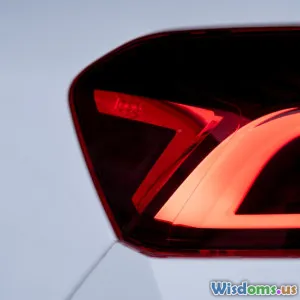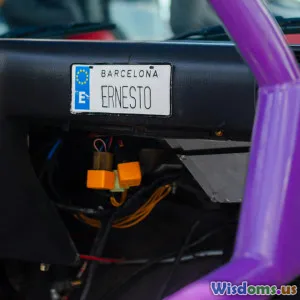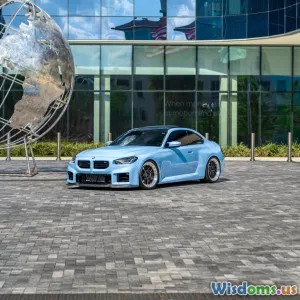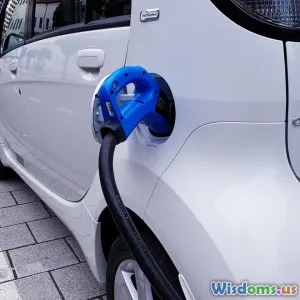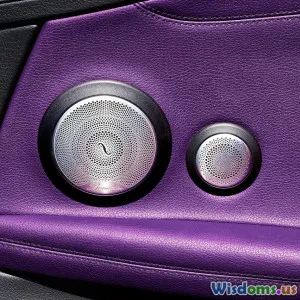
How 3D Printing Is Revolutionizing Customization in Automotive Design
8 min read Explore how 3D printing transforms automotive design with unparalleled customization and innovation. (0 Reviews)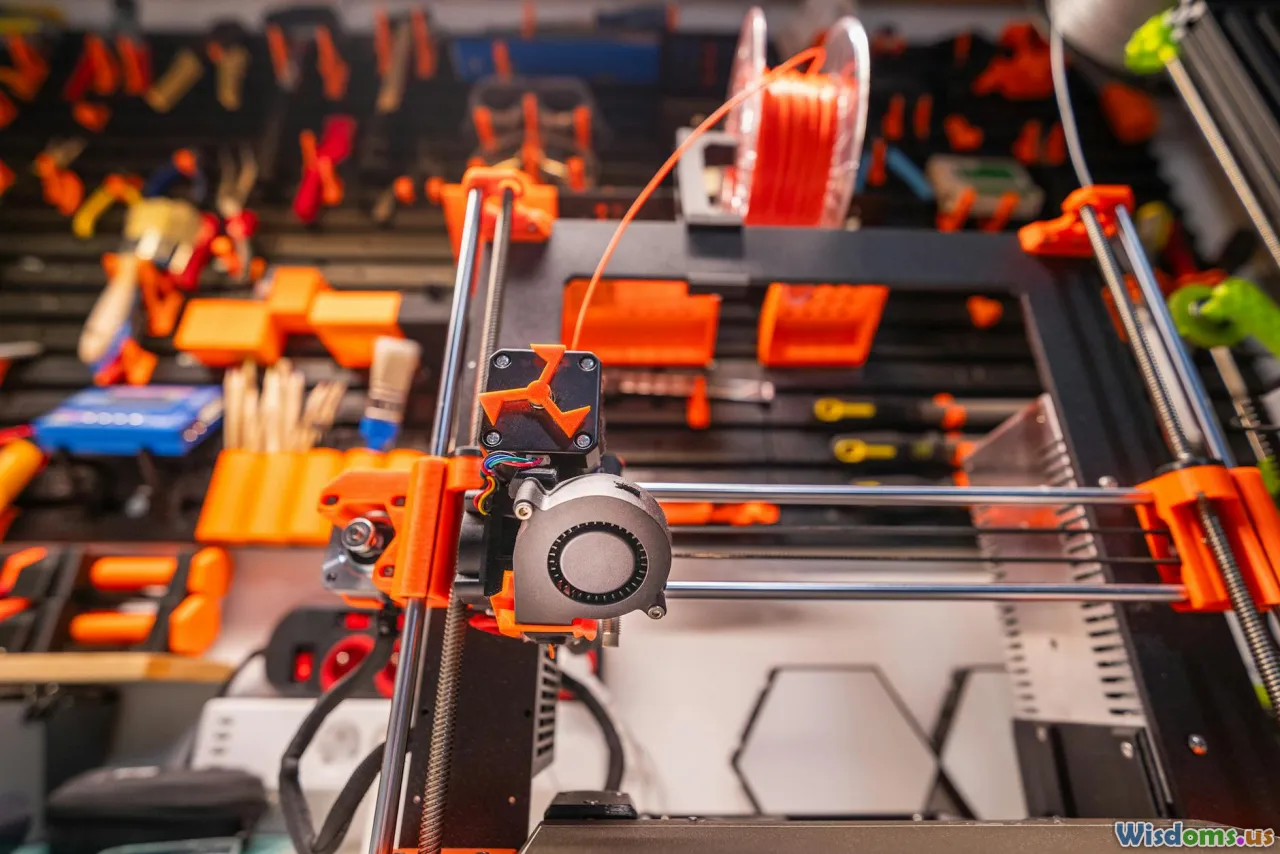
How 3D Printing Is Revolutionizing Customization in Automotive Design
In the constantly evolving world of automotive design, customization stands at the heart of consumer desire and innovation. For decades, car manufacturers balanced mass production efficiencies with the growing demand for personalized features—often a costly and time-consuming compromise. However, the advent of 3D printing technology, also known as additive manufacturing, is disrupting this paradigm, allowing designers and manufacturers to realize bespoke components swiftly, affordably, and with unheard-of precision.
Introduction
Imagine walking into a dealership and configuring a car where every aesthetic and functional part is tailored explicitly to your preferences—from intricate interior trims to aerodynamic exterior elements. This used to be a fantasy reserved for concept cars or ultra-luxury vehicles with price tags to match. Today, 3D printing is turning this possibility into reality, not only enhancing design freedom but also driving sustainability by minimizing material waste.
This article dives deep into how 3D printing is revolutionizing customization in automotive design by examining key applications, benefits, and real-world examples reshaping the industry.
The Basics of 3D Printing in Automotive Design
3D printing builds three-dimensional objects layer-by-layer directly from digital models. Unlike traditional subtractive methods that carve parts out of larger materials, additive manufacturing uses only what is necessary, drastically reducing waste.
What Makes 3D Printing Ideal for Customization?
- Design flexibility: Complex geometries and intricate details can be created without increasing production difficulty.
- Rapid prototyping: New parts can be produced quickly, allowing faster iteration and design validation.
- Cost-effectiveness: Low-volume or one-off parts don’t require expensive tooling like molds or dies.
- Material variety: From plastics and composites to metal alloys, 3D printing allows diverse materials suited for different automotive applications.
Key Areas Where 3D Printing Enhances Customization
1. Personalized Interior Components
The interior of a vehicle is a prime candidate for personalization—from dashboard trims to customizable air vents and ergonomic seating elements. 3D printing allows manufacturers to incorporate customer preferences in texture, color, and shape without retooling an entire assembly line.
For example, the Italian sports car manufacturer Ferrari has experimented with 3D-printed interior parts, enabling bespoke details for clients who want unique personalization that doesn't compromise weight or safety standards.
2. Customized Exterior Parts and Aerodynamics
Automotive enthusiasts often seek modified spoilers, bumpers, or vents that both boost performance and express individuality. Traditionally, custom exterior modifications required expensive machining or fiberglass work.
With 3D printing, makers like Local Motors have developed custom body panels and aerodynamic parts that precisely fit unique vehicle builds. This extends to small runs of future-focused designs, such as customized grilles or logos.
3. Rapid Prototyping Accelerating Innovation
One of the most significant advantages of 3D printing is rapid prototyping in the design process itself. Automotive companies worldwide leverage 3D printing to quickly produce prototypes, test their look and functionality, and iterate at unprecedented speed.
Ford Motor Company, for instance, used 3D printing to create over 500,000 prototype parts annually according to recent data. This capacity accelerates design changes and helps tailor parts even during late stages, effectively supporting extensive customization.
4. Spare Parts on Demand
Car enthusiasts often face delays and high costs for rare or discontinued parts. 3D printing offers a solution by enabling the production of these parts on demand—especially rare or vintage components that are hard to source.
Companies such as BMW use on-demand 3D printing services to reduce inventory expenses while fulfilling customization or restoration requests promptly.
Real-World Examples Driving the Revolution
-
Audi’s 3D Printing Lab: Audi uses metal 3D printing for lightweight, custom metal parts improving both aesthetic and structural components. Customized connecting gears for transmission systems can now be printed with intricate internal structures.
-
Bugatti’s Chiron Brake Calipers: Some of Bugatti’s Chiron brake calipers are 3D printed using titanium, providing complex designs optimized for cooling and weight. Such parts offer both performance customization and cost savings.
-
Local Motors’ Strati: Local Motors produced the world’s first 3D-printed electric vehicle, the Strati, in a matter of days. This is a prime case highlighting how additive manufacturing can cater to rapid development and nearly complete vehicle customization.
Economic and Environmental Impact
Beyond design freedom, 3D printing reduces waste drastically by using only the material needed — a significant environmental benefit when producing metal or composite parts. This sustainable manufacturing also often requires less energy compared to traditional molding or casting.
Cost-wise, additive manufacturing democratizes customization. Where complex, custom parts once necessitated enormous expenses due to tooling and manual labor, now small batches or individual parts can be economically produced. This lowers the barrier for enthusiasts and niche automotive businesses to innovate.
Challenges and Future Prospects
Despite many advantages, 3D printing still faces limitations:
- Material properties: Achieving uniform strength and durability in some printed materials remains a challenge.
- Production speed: For large-scale manufacturing, 3D printing may still lag behind injection molding.
- Regulation and certification: Automotive safety and compliance standards require rigorous validation for new manufacturing methods.
However, rapid technological advances continually mitigate these issues. With investments pouring into metal additive manufacturing and hybrid approaches incorporating 3D printing with traditional processes, the future is bright.
Conclusion
3D printing is fundamentally changing how automotive designers and manufacturers approach customization. By pushing the boundaries of what can be created affordably and swiftly, this technology enables truly personalized vehicles—from tailored interiors to performance-enhancing exterior components—while also fostering sustainability.
For consumers, this means more choices and individuality without exorbitant costs. For manufacturers, it marks a new era where innovation cycles shorten, costs drop, and product offerings become more diverse.
As 3D printing matures, its integration into automotive design will deepen, undoubtedly steering the industry toward a future where every vehicle can be a unique masterpiece built around the owner’s needs and tastes.
The revolution has begun—are you ready to drive customization forward?
Rate the Post
User Reviews
Popular Posts











